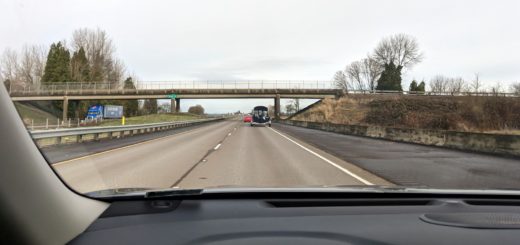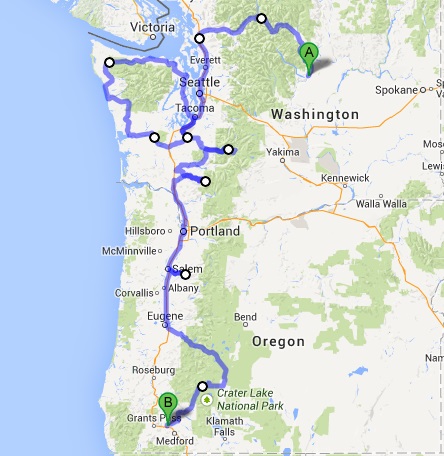Backpacking supplies – part 2
After purchasing the larger items necessary to go on our first backpacking trip, we still had a long shopping list of smaller items to pickup to do it right. While keeping weight as a priority we did not go for the uber high end titanium gear, but a fair share of aluminum and light plastics will do for now and probably far into our future of backpacking.
Cooking – As part of my bug-out bag I already had a small backpacking stove, and it worked well for the first two-day trip. However, on the final night the ignition stopped working on it so we decided to pickup a better stove, one that has a hose to reach the fuel and a larger burner, and keep the cheap one as a backup. The smaller stove did not have a larger burner so concentrated all it’s heat in the center of our pots, which was a problem when cooking. It also mounted to the top of the fuel can, which got quite tall and was always at risk of toppling over without great care. A single 4oz can of IsoButane fuel lasted us the two nights, but there was little to no reserve for another meal. We did bring out another 8oz can, but did not break into it.
We looked at the JetBoil setups but decided against one for a few reasons: 1) They are expensive, 2) they are bulky, 3) they are heavy, and 4) they boil water, very well I might add, but that is it. In the end, you can buy a better stove system, for more money, which will boil a liter of water faster, but one thing you have a lot of when camping out in the woods is time. One extra minute of time to boil is not a big deal.
Water – I had prior experience with the old-school iodine tablets and they work just fine and are very inexpensive and lightweight/small. It is what we used on our first backpacking adventure and it did well but for our lack of some filtration system to keep the small particles from the nearby river out of our drinking water. Also, if we kept buying and using these tablets they will only cost more than buying a mechanical device. At $32 per 100 liters the tablets cost more over time than the SteriPen which pays for itself in just a few backpacking trips. In the end we decided to pickup a SteriPen over the Microfilter Pump systems due to the heavier weight and bulky setup.
Lighting – Old school flashlights are just so 20th century now. Now-a-days it is all about LED right? And why bother holding your light source in your hands, use your noggin! Headlamps are the way to go. They are small, light, and mostly inexpensive… if you shop around.
$20 for the 90 lumens Black Diamond Gizmo was a great compromise. Sure we could spend more and double the lumens, but 90 is more than enough when all you need it for is to read. In fact, it was too much and luckily the Gizmo has a dimming function.
The LuminAid solar light turned out to be a great indoor light source, and recharges each day with the little solar panel. It lit the entire interior of the tent with a soft glow that would have easily allowed reading without blinding. It could double as a pillow as well, though we were concerned we may activate the light in the middle of the night, so we did not try.
Food Storage – The Rocky Mountains are full of black bears, and we fully expect to be backpacking in other bear-countries so having a bear-resistant storage device is mandatory. Instead of a heavy and bulky bear can, we chose to go with the kevlar bear bag from Ursack (now on Amazon). This was much easier to carry inside out backpacks and fit just as much food, if not more, over a can-style. I must say, hanging a bear can from a tree would have been a chore, but the bag was simple. My only concern with the bag-type is that if a bear got ahold of it, it would simply walk off with all our food. A bear can is not as easily walked off with when you need all fours to walk. Still, neither are odor resistant so we still needed a few more items to solve that problem.
The heavy duty double zip locking storage bags and odor barrier bags in combination with the kevlar bag (and some rope) gave us the confidence to leave our food (and trash, and toiletries) hanging from a tree overnight.
Misc – A slew of other small items accompanied us on our first adventure. All of these came in useful, and none went unused. Some can be trimmed down to save additional weight; such as you only need to bring one pot/pan combo, not both. Also, cut some of the items from the cooking utensils (you wont be grating cheese when backing?), and some of those extra tent stakes. For us, having two sets of the dry bags worked out perfectly to store, and keep dry, clothing, toiletries, and even electronics, in color coded bags. The extra light-weight (only 1 pound) sleeping bag was used for the dogs.
In the end, the grand total of the initial investment for all the gear, including a few clothing options and food, ran right about $2000 for the both of us and the two dogs. Other than a replenish of some dried foods, we still have all the gear to go backpacking, or just car-camping, any time we want. We will not be climbing Everest with this gear, nor will we be camping during a harsh winter weekend, but we can go beyond the horizon and into the back country for some true backpacking adventures for many years to come… and that excites me big time, which makes it worth every penny spent.





Sounds like you’re all set!
Love the list! If you do decide to get a water filter instead of the Steri Pen we love our Sawyer Mini. We grabbed a bigger Platypus bag to use with it (5 people and all) but with two of you the bag it comes with might be plenty!
http://currentlywandering.com/2015/09/12/gear-review-sawyer-mini-cheap-and-easy-water-filter-for-backpacking-or-emergencies/
Thanks Jess